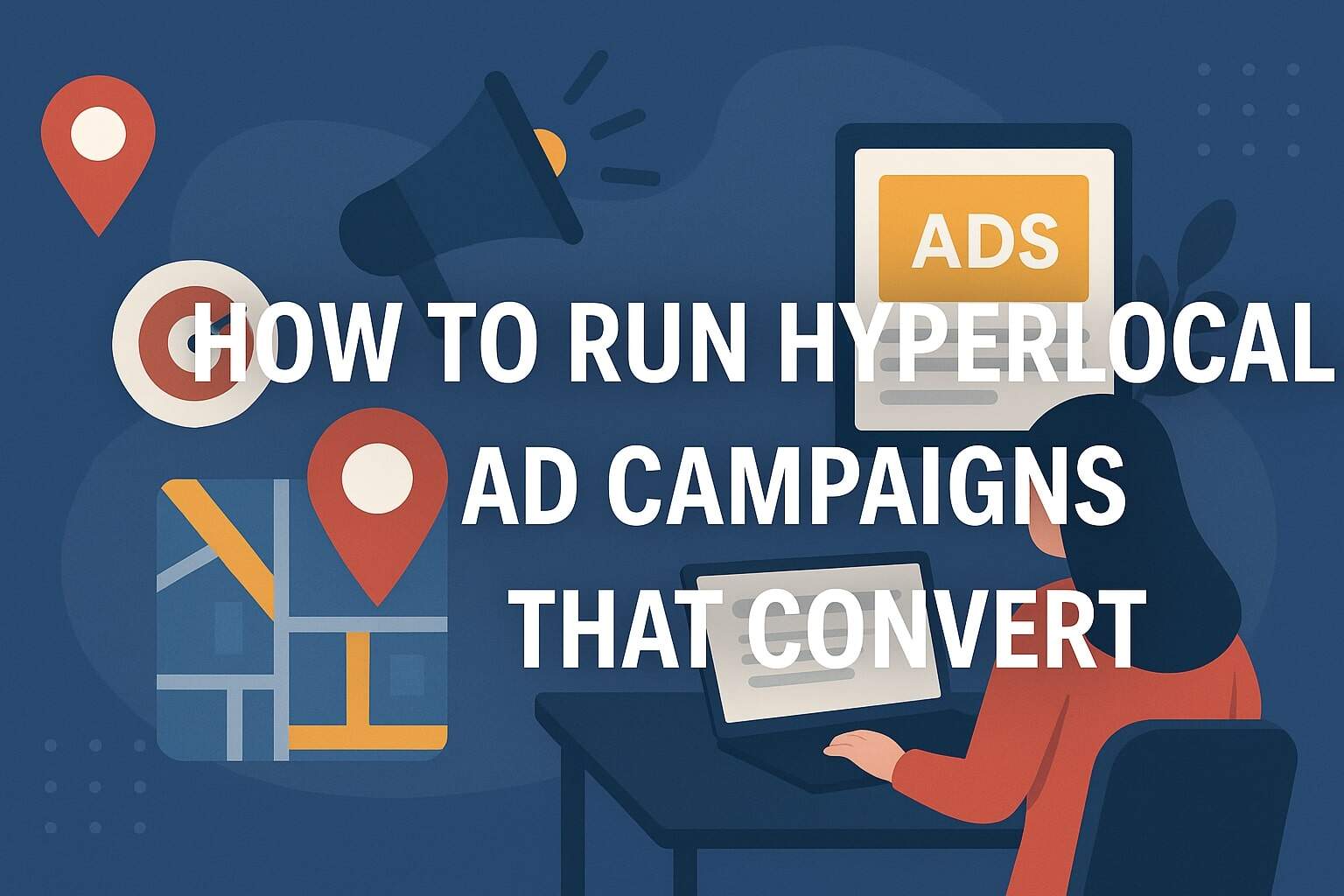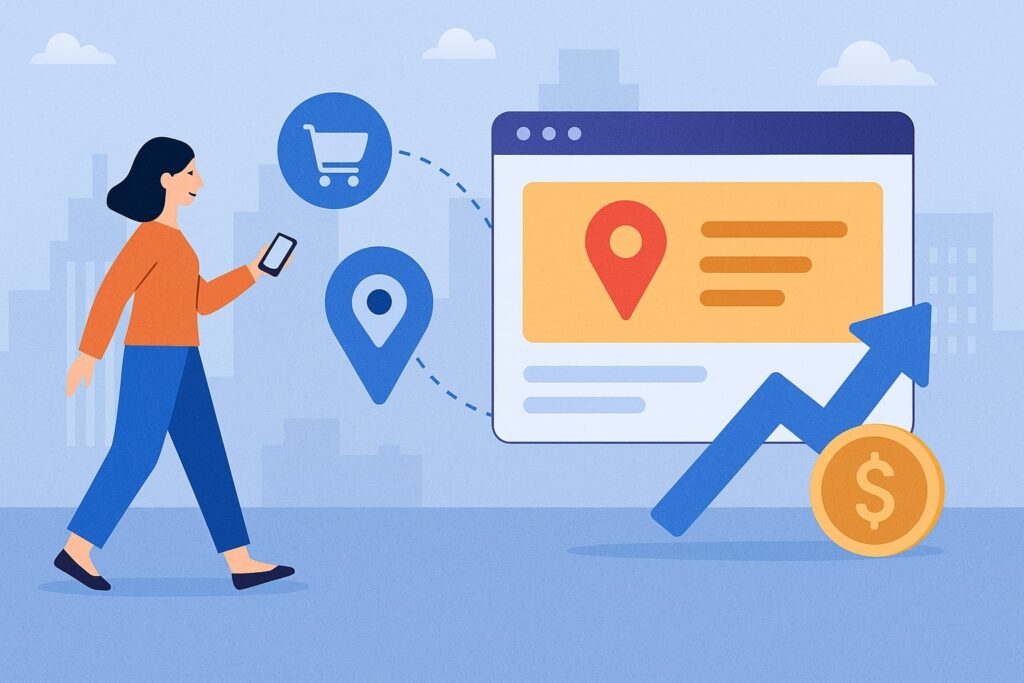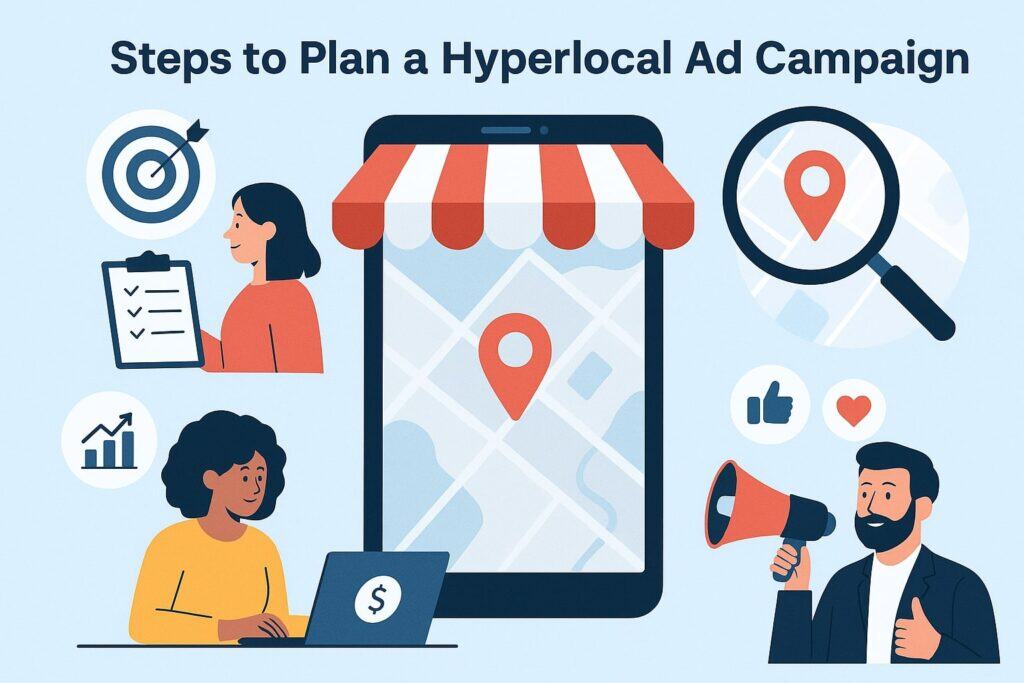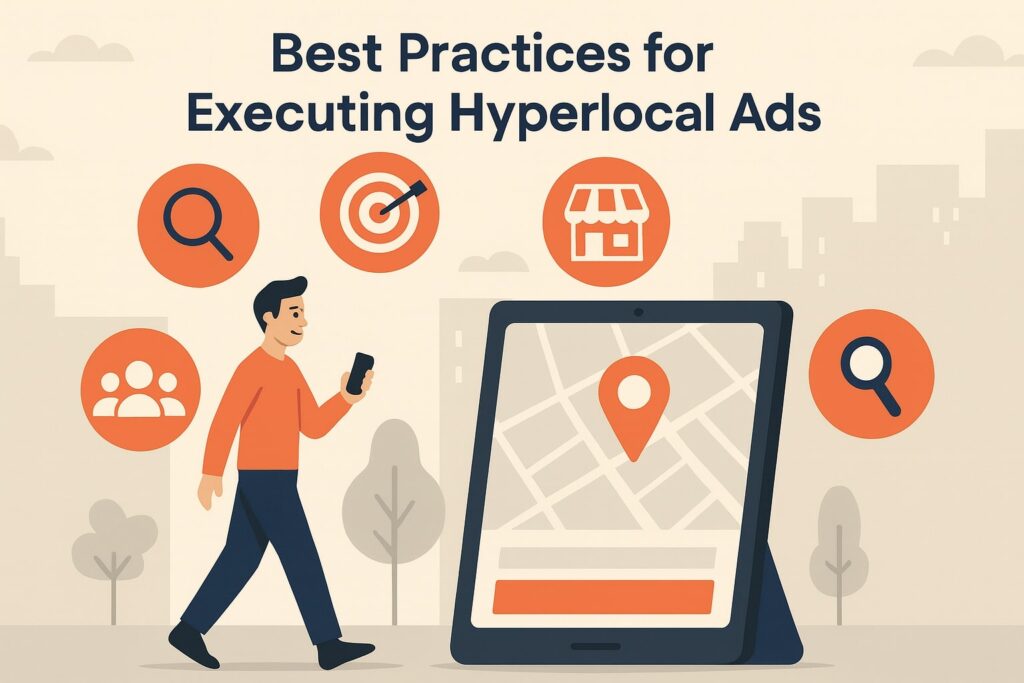
How to Run Hyperlocal Ad Campaigns That Convert
Digital advertising has evolved into a highly sophisticated discipline, but for many businesses—especially small and medium-sized ones—the real opportunity lies not in casting the widest net but in targeting audiences right in their backyard.
Hyperlocal advertising is one of the most effective ways to connect with potential customers at the neighborhood, city block, or even single-store level. Done correctly, it doesn’t just drive awareness but also boosts foot traffic, customer trust, and conversions at a fraction of the cost of broader campaigns.
In this guide, we’ll break down everything you need to know about hyperlocal ad campaigns that convert. From understanding what hyperlocal advertising means, to step-by-step planning, execution, optimization, and tracking, this article serves as a comprehensive roadmap for businesses ready to dominate their local markets.
Understanding Hyperlocal Advertising
Hyperlocal advertising refers to marketing strategies focused on reaching a small, well-defined geographic area. Unlike broad geo-targeting, which may cover an entire city or metropolitan area, hyperlocal campaigns often focus on neighborhoods, specific ZIP codes, or even a radius around a single store location.
The purpose is to connect with nearby audiences who are most likely to take immediate action—whether that’s visiting your store, calling your office, or booking your service online.
For example, a coffee shop running ads to people within two blocks during morning rush hour can drive instant traffic. Similarly, a real estate agent promoting open houses to nearby residents maximizes turnout by speaking directly to the most relevant audience.
The rise of mobile devices, location-based tracking, and platforms like Google Ads and Facebook Ads has made hyperlocal targeting easier than ever.
Consumers increasingly expect personalized offers, and businesses that understand their immediate geography can deliver precisely what potential customers are looking for, when and where they need it.
This approach works exceptionally well for businesses with physical locations—restaurants, retailers, gyms, dental clinics—but it’s also useful for service providers like plumbers, landscapers, and home cleaning companies. Even national brands use hyperlocal strategies to localize campaigns, making them feel community-driven and relevant.
The conversion potential of hyperlocal advertising lies in intent and immediacy. People who see your ads are already nearby and often in a decision-making mode. By offering timely promotions, directions, or localized content, you reduce friction and increase the likelihood of them becoming paying customers.
Why Hyperlocal Ads Drive Higher Conversions

The success of hyperlocal campaigns comes down to precision and timing. Instead of spending money showing ads to people across an entire city, you’re narrowing down to the exact neighborhoods, streets, or venues where your customers live, work, and shop.
This precision translates into higher click-through rates (CTR), lower cost-per-click (CPC), and stronger return on ad spend (ROAS).
There are several reasons why hyperlocal ads convert at higher rates:
- Relevance – Ads feel personal because they reflect the user’s location and context.
- Intent Matching – When someone searches “pizza near me,” they’re not looking for generic information—they want a nearby place to eat.
- Reduced Waste – By avoiding irrelevant impressions, you save money and allocate budgets only to high-potential audiences.
- Timeliness – Location-specific ads can be tied to time-sensitive offers, like lunch specials or seasonal promotions.
- Trust Factor – People prefer local businesses they can visit, call, or verify easily, which builds credibility faster than national competitors.
For example, a fitness studio promoting a free trial class within a 1-mile radius is speaking directly to people who could realistically attend. In contrast, showing the same ad city-wide wastes resources on people who live too far away.
This efficiency is why hyperlocal advertising has become a staple not just for small businesses but also for enterprises trying to establish a deeper community presence.
Steps to Plan a Hyperlocal Ad Campaign

Planning is the most critical stage in hyperlocal advertising. Without clear strategy, businesses risk either over-targeting (being too narrow and missing opportunities) or under-targeting (casting too wide a net).
Here’s a detailed step-by-step process:
1. Define Your Geographic Target
Choose your area wisely. This can be:
- A radius around your store (e.g., 2 miles).
- Specific ZIP codes.
- Neighborhoods known for high foot traffic.
- Venues such as airports, malls, or campuses (using geofencing).
2. Understand Your Audience
Study your local demographics. Who lives nearby? What’s the average income, age, and lifestyle? This helps you tailor messaging.
3. Select the Right Platforms
Popular platforms for hyperlocal ads include:
- Google Ads (search + display with radius targeting).
- Meta Ads (Facebook & Instagram) with location filters.
- Waze Ads for commuters.
- Snapchat, TikTok for younger demographics.
- Programmatic advertising for real-time location bidding.
4. Craft Localized Messaging
Use a copy that references landmarks, neighborhoods, or cultural events. Example: “Hungry on Main Street? Drop by Joe’s Pizza two blocks away.”
5. Budget Allocation
Since hyperlocal audiences are smaller, set modest budgets but expect higher conversion rates.
6. Creative Adaptation
Use visuals that reflect the local community—images of landmarks, cityscapes, or even customer testimonials from the neighborhood.
7. Timeline & Seasonality
Plan around local events—sports games, festivals, or seasonal weather patterns.
By following these steps, your campaigns become more structured and aligned with local behavior patterns, ensuring higher effectiveness.
Best Practices for Executing Hyperlocal Ads

Execution involves more than just setting up campaigns—it’s about optimization and ongoing adjustments. Below are best practices proven to enhance performance:
- Use Geofencing Technology – Create digital perimeters around competitor stores or busy areas, serving ads to people as they enter those zones.
- Leverage “Near Me” Keywords – Optimize Google Ads for queries like “dentist near me” or “best tacos downtown.”
- Dayparting (Time-Based Ads) – Show ads only during hours when conversions are most likely. Example: run coffee shop ads between 6–10 AM.
- Hyper-Personalized Copy – Include street names, directions, or proximity cues (“Just 3 minutes away!”).
- Integrate with Offline Campaigns – Combine digital ads with flyers, billboards, or local radio for reinforcement.
- Incentivize Immediate Action – Offer limited-time promotions to drive urgency.
- Track Calls & Store Visits – Use call tracking numbers and store visit conversions to measure success.
The key is consistency. Campaigns need daily or weekly optimization to prune low-performing keywords, adjust bids, and refresh creative. Businesses that treat hyperlocal ads as “set it and forget it” miss out on the real advantage—real-time adaptability.
Measuring Success: Metrics That Matter
To truly know whether your campaigns convert, you need to track the right performance metrics. Vanity metrics like impressions don’t tell the whole story; instead, focus on conversion-driven KPIs.
- Click-Through Rate (CTR) – Indicates ad relevance.
- Conversion Rate – Measures actions like calls, bookings, or in-store visits.
- Cost Per Acquisition (CPA) – Shows how much you pay per customer gained.
- Return on Ad Spend (ROAS) – Essential for profitability analysis.
- Store Visit Metrics – Available in Google and Meta Ads, showing how many users physically visited.
- Call Tracking & Form Submissions – Direct indicators of interest.
Advanced businesses integrate their POS or CRM systems with ad platforms to connect online clicks with offline purchases. This attribution provides a clearer picture of ROI.
Common Mistakes to Avoid
Even well-meaning advertisers often fall into traps that sabotage campaign performance. Some mistakes include:
- Over-Narrow Targeting – Too small a radius may exclude viable customers.
- Generic Messaging – Ads that don’t reflect local culture or landmarks feel impersonal.
- Ignoring Mobile Experience – Most hyperlocal traffic comes from smartphones. If landing pages aren’t mobile-friendly, conversions drop.
- Not Leveraging Reviews – Local reviews influence buying decisions. Ads that showcase ratings and testimonials perform better.
- Lack of Testing – Not running A/B tests on creatives and CTAs leads to wasted spend.
- Neglecting Analytics – Without proper tracking, businesses can’t identify what’s working.
Avoiding these mistakes ensures smoother campaign execution and stronger ROI.
FAQs
Q1. Is hyperlocal advertising only for small businesses?
Answer: Not at all. While small businesses like coffee shops, salons, and restaurants benefit the most, hyperlocal advertising is also embraced by big brands. Enterprises often localize their campaigns to build community connections.
For example, a national grocery chain might run neighborhood-specific promotions highlighting local farmers or community events. Large brands do this because local relevance drives trust and fosters brand loyalty. Instead of being seen as a faceless corporation, they position themselves as community participants.
For smaller businesses, hyperlocal ads are a lifeline—giving them an affordable way to compete with industry giants on a neighborhood level.
Q2. How much budget do I need for hyperlocal campaigns?
Answer: Budget requirements vary widely, but hyperlocal ads are often more cost-efficient than city-wide or national campaigns. A small business can start with as little as $5–10 per day on platforms like Facebook or Google. Since you’re only targeting nearby audiences, competition is lower and CPCs are cheaper.
That said, businesses should still set realistic expectations. Running ads for one week on a minimal budget won’t generate sustainable insights.
Ideally, campaigns should run for at least 30 days, with budgets flexible enough to allow for testing different audiences, creatives, and ad placements. The best practice is to start small, gather data, and scale as results prove ROI.
Q3. What industries benefit most from hyperlocal ads?
Answer: Virtually any industry with a physical or service-based local presence benefits. Top examples include:
- Restaurants & Cafes
- Retail Stores
- Fitness Centers
- Healthcare Providers
- Home Services (plumbers, electricians, cleaners)
- Real Estate Agents
However, e-commerce brands can also use hyperlocal strategies to push pop-up shops, flash sales, or city-specific promotions. By tying digital campaigns to real-world events, they blur the line between online and offline, maximizing brand exposure and conversions.
Conclusion
Hyperlocal advertising is no longer just a marketing buzzword—it’s a necessity in today’s competitive landscape. By narrowing your focus, you cut waste, increase relevance, and maximize conversions.
The formula is straightforward: target smartly, craft localized messaging, leverage the right tools, and constantly optimize.
Businesses that understand their local audience and speak directly to them enjoy not only higher conversions but also deeper community loyalty. Whether you’re a small café, a local gym, or a national brand with neighborhood stores, hyperlocal ad campaigns unlock the path to sustainable growth.